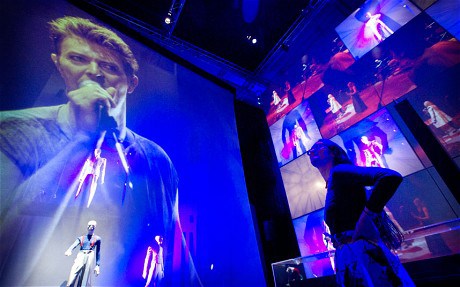
The result of Jeremy Corbyn‘s shadow cabinet reshuffle, a fairly unexplosive and routine one as it turned out, was not the issue. Reading about him doing what the leader of a party really ought to do, which is to say sort it out, you’d think he was genuinely behaving like Stalin and using elongated cutting equipment nocturnally. This makes a better headline. And there’s the rub. With a predominantly rightwing media – and even my beloved Guardian came out in support of Yvette Cooper in last year’s leadership race, a Toynbeean position it appears to have retained – Corbyn can do no right. If he acts, he’s running a totalitarian dictatorship. If he doesn’t act, he’s weak. Either way, he’s “unelectable”, which, if he was, is something he has in common with the previous two Labour leaders. I hesitate to say he can’t win.

I have no love for the London Evening Standard. It’s free. I pick up a copy at the station, because I might as well, and flick through it in a matter of seconds, scowling as I do so. One thing that has always irked me about living in London, even when I liked living in London, is that the capital’s local newspaper is rightwing. But those are the breaks. The Standard reported on Corbyn’s reshuffle yesterday in a way that made clear the mountain he has to climb. He was, the paper wrote, in “open warfare with shadow ministers”. He was “warned”, it said, of being “petty and divisive.” He would, it said, “tighten his grip” by moving those who “oppose him on key policies.” He would “award big promotions” to “left-wingers”. Pardon my utopianism, but isn’t the Labour party “left-wing”. I know what the media means when it speaks of “hard left” and “centre left”, but the papers are obsessed with the hardness of the left since Corbyn was voted in on an unprecedented 59.5% mandate. Presumably those who voted for him wanted something “harder” than Ed Miliband. (Having declined to vote Labour since 1997, I certainly did.)
As all newspapers do, the Standard quoted an unnamed source (a “leading Labour moderate”) who helpfully voiced the newspaper proprietor’s views for him, who called this a “revenge reshuffle” (which made the headline). Then, a comment from an actual “ex-minister”, Kim Howells, a former union man turned Blair loyalist who stood down at the 2010 general election, having been reshuffled himself by Gordon Brown; he’d helpfully described Corbyn’s team as “superannuated Trotskyite opportunists”. (He also called them “lunatics” but the Standard had run out of space it might better devote to house prices, food fads or Boris Johnson’s latest wheeze.)

In a follow-up piece, it said Corbyn had “swung the axe” on Brownite shadow culture secretary Michael Dugher – in other words, replaced him – a chap who within seconds of hearing the news joined the ranks of useful idiots available at all hours to attack Mr Corbyn. His removal made a “mockery” of the “so-called new politics”. I personally think Corbyn should have “swung the axe” in Syria-bombing turncoat Hilary Benn’s direction, especially after his veiled declaration of his intention to stand against Corbyn in a future leadership challenge in the Commons.
It didn’t take long to get to the word “purge” (another handy allusion to Stalin, or Hitler if you prefer). “One Labour MP” said it was becoming “a war between Mr Corbyn and supporters of [Tom] Watson.” This is the narrative we are being sold. Another Labour MP – named, at least – called Graham Jones tweeted: “With the sacking of Dugher, traditional working class Labour is dying.” He also spoke of that old chestnut a “remote north London elite,” a slur that pretty much did for Miliband, although he also had two kitchens, which is careless.
Dugher is the one who implicitly warned JC not to make Labour a “religious cult”. The Standard added, “The reference to Mr Dugher’s provincial working-class roots was seen by MPs as a contrast with Mr Corbyn’s North London circle.”

I despair of the rightwing bias in our press, but there you go, it’s a free market, and it’s run by people with a vested interest in the free market. The story of Jeremy Corbyn’s rise and prospective fall is being written by the eventual victors, and he appears to be able to do nothing about it. He’s too quiet, too reasonable, too low-key – all qualities that should be refreshing in the bellowing Bullingdon that is Parliament, but do him no favours with so many louder voices around him. But I also despair of the Labour party. All we hear about are internecine struggles and knives in backs, petty bickering, negative briefing, unnamed moderates firing shots across their leader’s bows. I’m not sure what the answer is. Take better media advice? You don’t have to join them, but you must occasionally beat them.
This was supposed to be the dawning of a new era for British party politics. The idea of a “left-wing” Labour party seemed like an impossible dream before Corbyn’s democratic ascent. It’s still within Labour’s grasp, but they have to stop fighting each other, unite under their leader or fuck off to the back benches. I am a potential Labour voter. I haven’t been one of those since the Bernie Eccelstone/Formula One back-hander and Blair’s pack of lies in October 1997. I can’t be the only one. But I keep thinking of the best line in Dr Strangelove, especially as bombs fall on Syria in the name of Hilary Benn and 65 other Labour hawks:
Gentlemen! You can’t fight in here. This is the War Room!

























